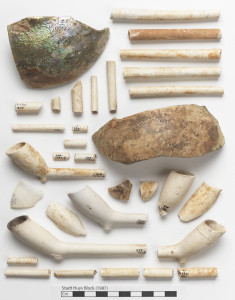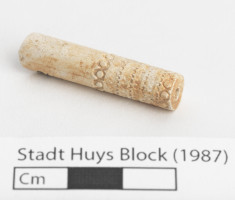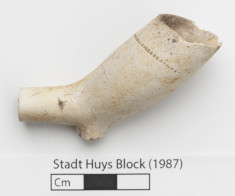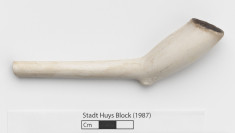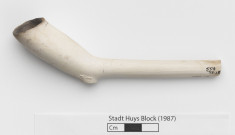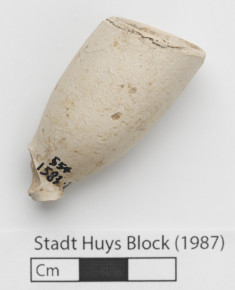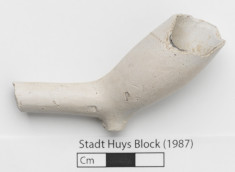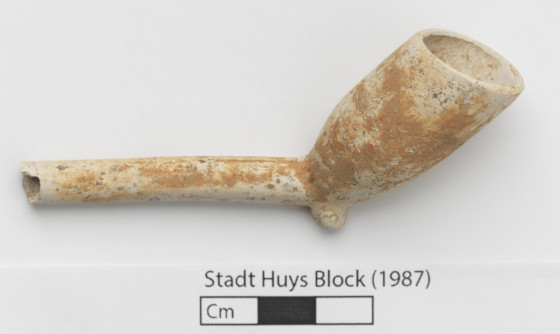Introduction: Lots 8, 9, and 15 are modern designations for adjacent parcels of land that were owned together and used as a single property until the early 1830's. Excavations produced important discoveries like that of the Colonial-era Lovelace Tavern, proving that significant archaeological resources could still exist in urban spaces. Project archaeologists were able to lobby for increased time and funds to continue their work on the strength of these finds, leading to additional discoveries. In all, the project provided considerable information about the history of New York City and its inhabitants from the 17th to the 20th centuries.
The tavern was constructed by the second English Governor of New York, Francis Lovelace, around 1670. Taverns were important spaces for colonial communities, serving as centralized meeting places that fulfilled important social, recreational, political, and economic functions. Lovelace Tavern became New York's temporary City Hall starting in the late-17th century after the Stadt Huys fell into disrepair and was demolished in 1706.
Rationale: Remains of the Lovelace Tavern were first encountered during the excavation of Test Cut AQ. Overall, archaeologists excavated 27 test cuts inside, adjacent to, or within the walls of the tavern, representing around fifty-percent of the total area. Test Cut BY was placed along two visible, historic stone walls: Lot 9's 19th-century southern boundary wall and the eastern wall of the 17th-century Lovelace Tavern. Significant archaeological remains of the Tavern were discovered in the test cut, including the burned remnants of its floor. A thin, 1- by 2.5-foot extension was placed south of the southeast corner of the test cut. The extension was not given a different name and is included in the write up for Test Cut BY.
Results: Unlike the main body of Test Cut BY, only fragmentary remains of the burned Lovelace Tavern floor were found in the southern extension from 16- to 20-inches below excavation surface. It is likely that the tavern floor was disturbed when the Lot 9's stone boundary wall was built in the 19th century.
Lot 9, Test Cut BY, Strata XI, Level A
-
Collection method
Trowel, Screen (1/2-inch mesh).
-
Soil description
Burned Wood
-
Munsell
10YR 4/2 - 10YR 4/3


